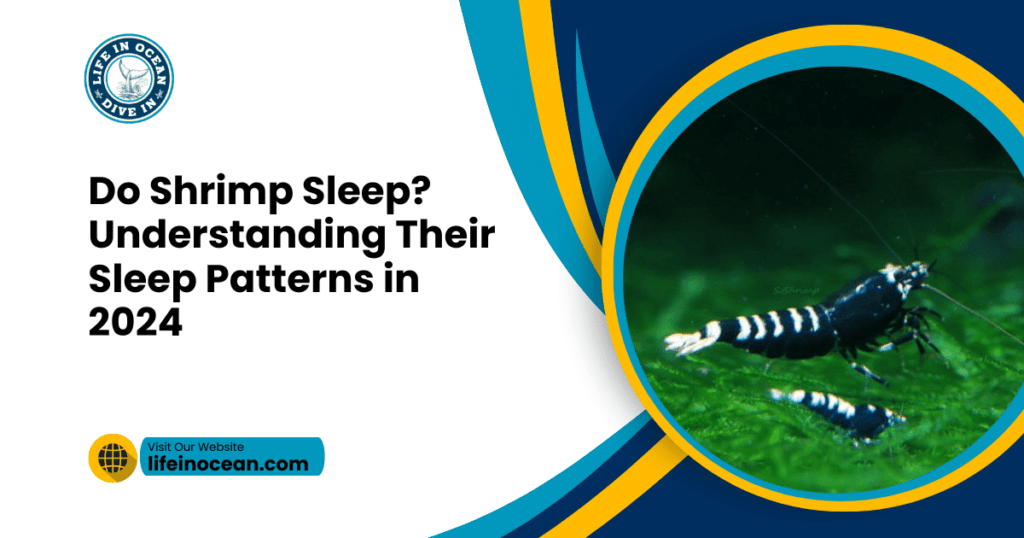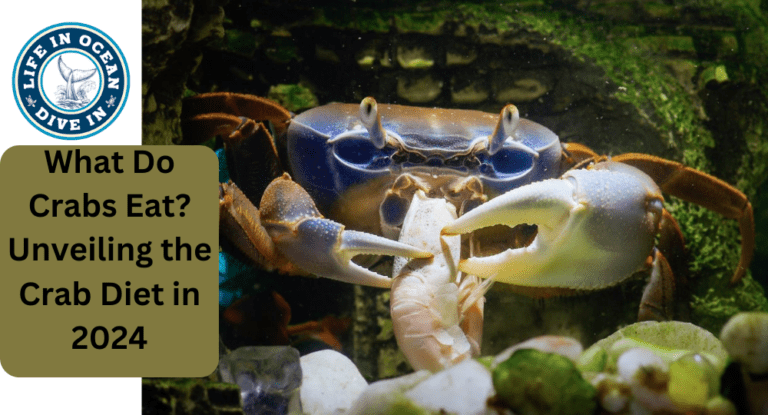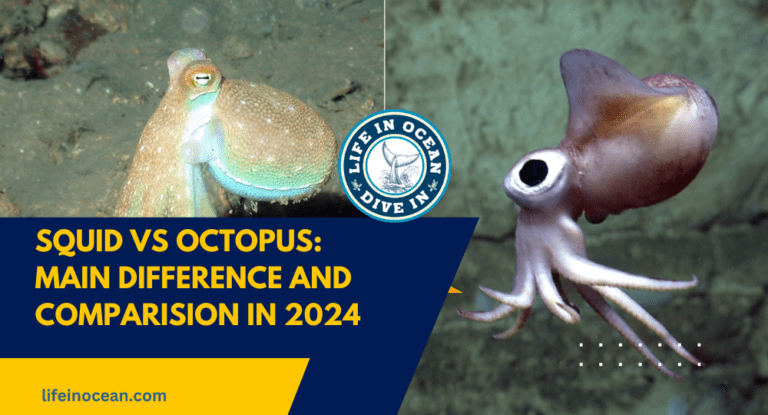Ever wondered if tiny crustaceans catch some shut-eye like we do? The answer might surprise you. While these tiny creatures don’t exactly have cozy beds or comfy blankets, their rest habits are quite intriguing. Contrary to popular belief, shrimp, tiny crustaceans, do not sleep in the same way humans do. Instead of closing their eyes and drifting off into dreamland, fascinating creatures enter a state of reduced activity where they remain alert to potential dangers lurking around them.
So, if you’re curious about the mysterious world of shrimp slumber and want to uncover the secrets behind their unique resting behaviors and brain activity, buckle up for an eye-opening journey into the realm of aquatic snoozing.
Table of Contents
Understanding Shrimp Sleep Patterns
Sleep-Like Behaviors
Shrimp display behaviors akin to sleep, although their patterns differ from mammals. Unlike humans who have consolidated periods of sleep, shrimp take short naps throughout the day and night. These brief resting periods help them conserve energy and stay alert for predators.
Shrimp’s sleep-like behavior involves a state of reduced activity where they remain still for short durations. This rest allows them to recharge and maintain essential bodily functions without being fully inactive like when they are sleeping.
Insights into Behavior
Understanding shrimp sleep patterns offers valuable insights into their overall behavior and well-being. By observing how often shrimp enter these restful states, researchers can decipher critical information about their health, stress levels, and habitat conditions. For instance, if shrimp start sleeping less or more frequently than usual, it could indicate changes in their environment or health status.
Defining Sleep in Invertebrates
What is Sleep in Invertebrates?
Sleep in invertebrates refers to a reversible state where their activity and responsiveness to external stimuli decrease. This phenomenon is observed not only in higher organisms but also in creatures like shrimp. Even though they lack a centralized brain, shrimp display behaviors akin to sleep.
Invertebrate sleep patterns help us comprehend the evolutionary roots of this essential biological function. By studying how these animals rest, scientists gain insights into the fundamental nature of sleep across different species.
Similarities with Higher Organisms
Shrimp exhibit behaviors that resemble those seen in higher organisms when they are resting or asleep. They may find sheltered spots, reduce movement significantly, and become less responsive to disturbances around them. These actions mirror the characteristics of sleep found in more complex animals.
Observing these sleep-like behaviors sheds light on the universality of rest among living beings regardless of their complexity. Understanding how even simple creatures like shrimp experience periods of reduced activity can provide valuable information about the purpose and benefits of sleep.
- Invertebrate sleep aids research on evolution
- Studying shrimp behavior provides insights into universal rest patterns
The Science Behind Shrimp Sleep
Quiescence During Sleep
Research suggests that shrimp exhibit a form of sleep known as quiescence. This state involves reduced activity levels and responsiveness, akin to restful periods in other animals. Studies indicate that during this phase, shrimp display minimal movement and decreased sensory responses.
Studies have shown changes in brain activity patterns and neurotransmitter levels during shrimp sleep. These alterations are crucial indicators of the sleeping state in these crustaceans. By monitoring brain function and chemical signaling, researchers can gain insights into the physiological processes underlying shrimp sleep.
Neural Mechanisms Study
The science behind shrimp sleep delves into understanding their neural mechanisms. Researchers investigate how the brain of these marine creatures functions during different stages of rest. By examining neuronal activities and connectivity patterns, scientists aim to unravel the complexities of shrimp slumber.
Exploring physiological changes associated with sleep in shrimp, researchers analyze factors like metabolic rate variations and hormone regulation. These investigations shed light on how internal processes adapt to support restorative functions during periods of quiescence for these aquatic organisms.
Sleep-Wake Cycle in Dwarf Shrimp

Diurnal Cycle
Dwarf shrimp follow a diurnal sleep-wake cycle. They are more active during the day and rest at night. This means that these tiny creatures have specific periods of activity and rest throughout a 24-hour period. Environmental factors like light intensity play a crucial role in regulating their activity levels.
Dwarf shrimp exhibit distinct behaviors based on the time of day, with increased movement and feeding during daylight hours, while they tend to be less active at night. Observing this pattern can give insights into their natural rhythms and preferences, aiding in creating an optimal environment for them to thrive in aquariums.
Environmental Influences
The sleep-wake cycle of dwarf shrimp is greatly impacted by various environmental factors such as light intensity and temperature fluctuations. For instance, exposure to bright light can signal daytime activities for these nocturnal creatures, encouraging them to explore their surroundings actively.
Maintaining suitable lighting conditions within an aquarium mimicking their natural habitat is essential for promoting healthy behavior patterns among dwarf shrimp. By understanding how these external elements affect their cycle, aquarists can adjust tank settings accordingly to ensure the well-being of these fascinating aquatic pets.
Factors Affecting Dwarf Shrimp Sleep
Role of Light
Dwarf shrimp’s sleep patterns are significantly influenced by light. Just like in humans, light plays a crucial role in regulating their sleep-wake cycle. Exposure to natural or artificial light can impact when and how long dwarf shrimp sleep. For example, keeping tank lights on for extended periods can disrupt their nighttime rest.
Light:
- Crucial role in regulating sleep patterns
- Natural or artificial light impacts sleep-wake cycle
Water Parameters and Stressors
Changes in water parameters, such as pH levels and oxygen concentration, can directly affect the quality and duration of dwarf shrimp’s sleep. Fluctuations outside the optimal range may lead to restless behavior or difficulty falling asleep. Stressors like loud noises or sudden disturbances can disrupt their natural sleeping habits.
Nocturnal Behavior of Cherry Shrimp
Nighttime Activity Patterns
Cherry shrimp, fascinating creatures in the aquarium world, are known for their nocturnal behavior. They are most active during the night, displaying behaviors like scavenging for food and exploring their environment under dim lighting conditions. This nighttime activity is a stark contrast to their daytime habits of hiding and seeking shelter in plants or other safe spots within the tank.
Cherry shrimp’s preference for darkness can be observed when they come out from their hiding places as soon as the lights go off in the tank. They start moving around more actively, feeding on algae and leftover fish food present in the aquarium substrate. This increased activity at night is crucial for maintaining a healthy ecosystem within an aquarium.
- Pros:
- Active scavengers that help clean up excess food and algae.
- Enhance natural behaviors by providing dim lighting during nighttime hours.
Insights into Natural Habitat
Observing cherry shrimp’s nocturnal behavior offers valuable insights into their natural habitat preferences and requirements. In the wild, these animals thrive in densely planted areas with plenty of hiding spots to evade predators during daylight hours while being active hunters at night.
By replicating this natural environment in an aquarium setting, aquarists can ensure that cherry shrimp feel secure and exhibit their full range of behaviors. Providing ample plant cover, driftwood structures, and caves mimics their preferred habitats where they can comfortably carry out activities such as molting (shedding exoskeleton) and mating rituals.
- Cherry shrimp are active scavengers.
- Their nocturnal behavior aids in cleaning up excess food.
- Dim lighting encourages natural behaviors at night.
- Observe cherry shrimp after turning off tank lights to witness nocturnal activity.
- Create a habitat with ample plants and hiding spots to mimic natural environments effectively.
Impact of Light on Shrimp Activity at Night
Influence of Light Intensity and Duration
Shrimp’s activity levels during the night can be affected by the intensity and duration of light exposure. Bright lights at night may disrupt their natural behavior patterns, leading to altered sleep cycles. For instance, prolonged exposure to intense light can confuse shrimp, making them more active when they should be resting.
Dimly lit environments during nighttime play a crucial role in maintaining the natural activity levels of shrimp. By reducing the intensity of artificial lights, shrimp are less likely to experience disturbances in their sleep patterns. This promotes a more balanced and healthier lifestyle for these nocturnal creatures, allowing them to exhibit behaviors similar to those observed in their natural habitat.
Promoting Natural Behavior through Dim Lighting
Providing a dimly lit environment during nighttime hours is essential for promoting healthy behaviors among shrimp. When exposed to excessive or bright artificial light, shrimp may become disoriented and display erratic behavior such as increased swimming activity or restlessness. On the contrary, when placed in an environment with reduced light, shrimp tend to exhibit more typical behaviors like grazing for food or seeking shelter.
Sleep’s Role in Dwarf Shrimp Health and Reproduction

Importance of Sleep for Dwarf Shrimp
Dwarf shrimp, like other living beings, require rest to maintain their overall health. Adequate sleep is crucial for their well-being as it plays a significant role in various aspects of their lives. Just like humans, shrimp also need rest to function optimally. Without proper sleep, dwarf shrimp can experience negative effects on their immune system, growth rate, and reproductive abilities. This lack of adequate rest can lead to weakened immunity, stunted growth, and difficulties in reproducing effectively.
Proper understanding of the importance of sleep for dwarf shrimp is essential in enhancing their quality of life and increasing breeding success rates. By ensuring that these tiny creatures get enough rest each day, shrimp owners can significantly improve the health and overall well-being of their aquatic pets.
Impact of Sleep Deprivation on Dwarf Shrimp
Sleep deprivation negatively affects dwarf shrimp’s ability to thrive in captivity. When deprived of sufficient rest periods during the night cycle or due to disruptions caused by light exposure at night—like artificial lighting—their health may deteriorate rapidly. Immune system functions are compromised when they do not get enough sleep; this makes them more susceptible to diseases and infections that could be fatal if left untreated.
Inadequate sleep can hinder the growth and development processes critical for healthy dwarf shrimp populations within an aquarium setting. Their reproductive capabilities may also be impacted by insufficient rest periods since successful reproduction requires optimal health conditions—which are closely linked with adequate amounts of uninterrupted sleep.
Behavior and Communication Amongst Cherry Shrimps
Social Behaviors of Cherry Shrimps
Cherry shrimps, as tiny crustaceans, engage in a variety of social interactions. From intricate mating rituals to establishing hierarchical structures within their groups, these behaviors are essential for their survival and reproduction. By observing how cherry shrimps interact with one another, scientists can gain insights into the complexities of their social lives.
Studying the behavior of cherry shrimps reveals fascinating details about their communication methods. These crustaceans rely heavily on chemical signals, such as pheromones, to convey information and establish connections within their community. Understanding these communication patterns sheds light on how cherry shrimps navigate their environment and interact with one another effectively.
Importance of Understanding Behavior and Communication
Exploring the behavior and communication patterns among cherry shrimps offers valuable insights into the dynamics of these species. By delving into how they respond to various stimuli and communicate with each other through chemical signals, researchers can unravel the intricacies of crustacean social structures. This knowledge not only enhances our understanding of cherry shrimp communities but also provides a window into broader concepts related to animal behavior.
Observing how cherry shrimps interact with each other unveils a world where external stimuli shape their responses and interactions significantly. By examining how they communicate using pheromones or adjust their behaviors based on environmental changes, scientists can draw parallels between crustacean societies and human interactions. This comparative approach allows researchers to draw meaningful conclusions about social dynamics across different species.
Final Summary on Do Shrimp Sleeps
You’ve dived deep into the world of do shrimp sleep, uncovering the mysteries behind their nocturnal behaviors and the impact of light on their activity. Understanding how these tiny creatures rest and navigate their environment sheds light on the intricate balance of nature. As you ponder the intricacies of shrimp sleep, consider how even the smallest creatures play a vital role in our ecosystem.
Next time you catch a glimpse of these fascinating creatures, think about their nighttime adventures and the importance of providing them with a suitable environment to thrive. Whether you’re a shrimp enthusiast or simply intrigued by the wonders of nature, remember that every creature, no matter how small, contributes to the rich tapestry of life on our planet.

Frequently Asked Questions
Do shrimp sleep like humans?
Shrimps do have sleep patterns, but they are quite different from human sleep. Shrimps experience periods of rest where their activity levels decrease, but it’s not exactly the same as how humans sleep.
What factors affect a dwarf shrimp’s sleep?
Factors such as water quality, tank conditions, temperature fluctuations, and light exposure can impact a dwarf shrimp’s ability to rest properly. Ensuring a stable and suitable environment is crucial for promoting healthy sleeping habits in dwarf shrimps.
Are cherry shrimps nocturnal creatures?
Yes, cherry shrimps are primarily nocturnal creatures. They tend to be more active during the night and exhibit behaviors such as feeding and exploring their surroundings under low-light conditions.
How does light affect shrimp activity at night?
Light plays a significant role in regulating shrimp behavior at night. Too much light can disrupt their natural rhythms and make them more active when they should be resting. It’s important to provide a dimly lit environment for shrimps during nighttime hours.
Why is understanding shrimp sleep important for their health?
Understanding shrimp sleep patterns is essential for maintaining their overall health and well-being. Proper rest allows shrimps to recharge energy levels, support growth, strengthen immune systems, and promote reproductive success in captivity.







